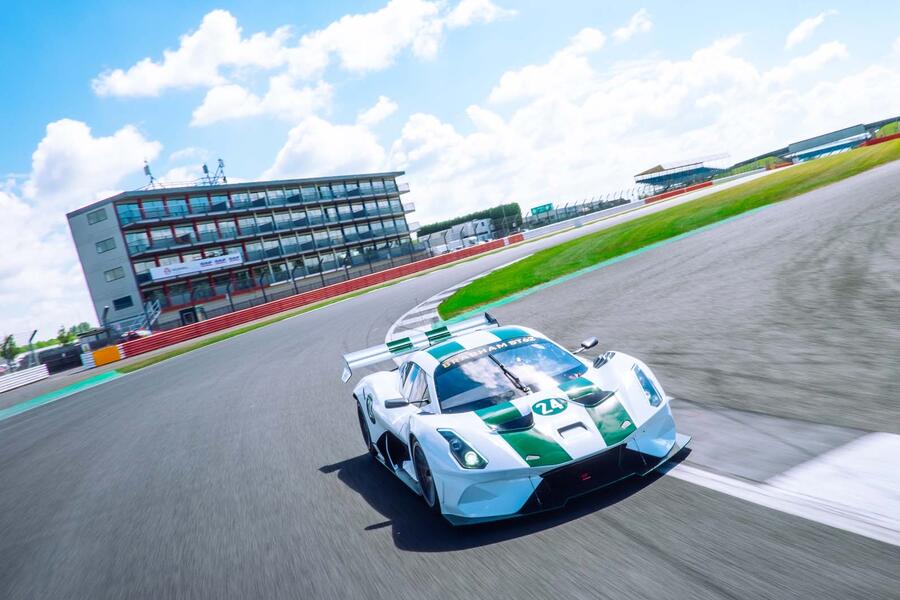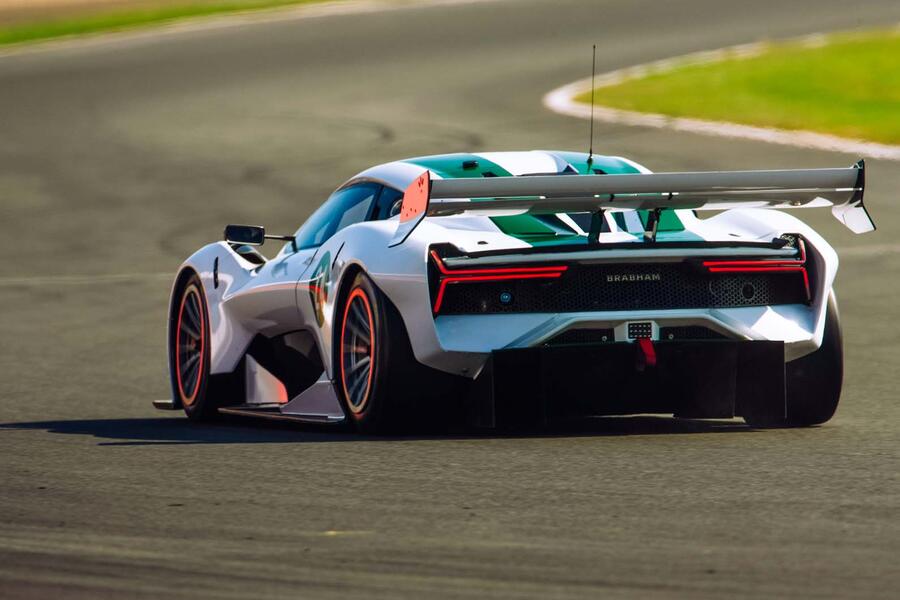It is an utterly brilliant car, and I say that from the fortunate perspective of having driven a large number of GT3 racing cars, which in terms of track performance are the machines to which the BT62 comes closest. Actually, it’s far quicker than any GT3 car because it has more power, better brakes, a lot less weight and, I expect, more downforce, but that’s not why I loved it.
The first thing that enthrals you is the engine. It has the heart and power of something that should belong in a 1980s Group C racing car. It’s a little lethargic at low revs, as you’d expect from a normally aspirated motor producing 138bhp per litre, but from 4000rpm to 7500rpm, where all sorts of lights start flashing at you, it’s a proper maniac and all the better for it.

But then you’ve got to lose that speed and here I confess I struggled. I’m 6ft 4in and not slight in construction, but there’s no force my leg could apply to the pedal at high speed that came close to triggering the ABS. If you could make a road car slow like this, you’d set the airbags off. Seeing how late you could leave landing on the brakes became a twice-a-lap odyssey for every lap I was out there. At first, I was awed, then entertained and finally just very curious to see exactly what was needed to distress those discs. I never found out: at least for those few laps, the Brabham’s brakes were better than its driver’s ability to apply them.
Even so, that’s not what I’ll remember most about this car. It’s the way it handles. GT3 cars tend to be set very stiff, require quite an aggressive driving style and always move around. You get into them ready for a fight. The Brabham could not be more different. With slicks and wings, grip levels are such that they make any road car feel like you’re driving on ice, but it is the confidence it inspired that is so much more impressive even than this. You can brake all the way into an apex and it won’t so much as shrug its shoulders; you can pick up the power beautifully early; and even over the bumps you find as you accelerate onto the Wellington Straight, it places it all where it’s needed.
